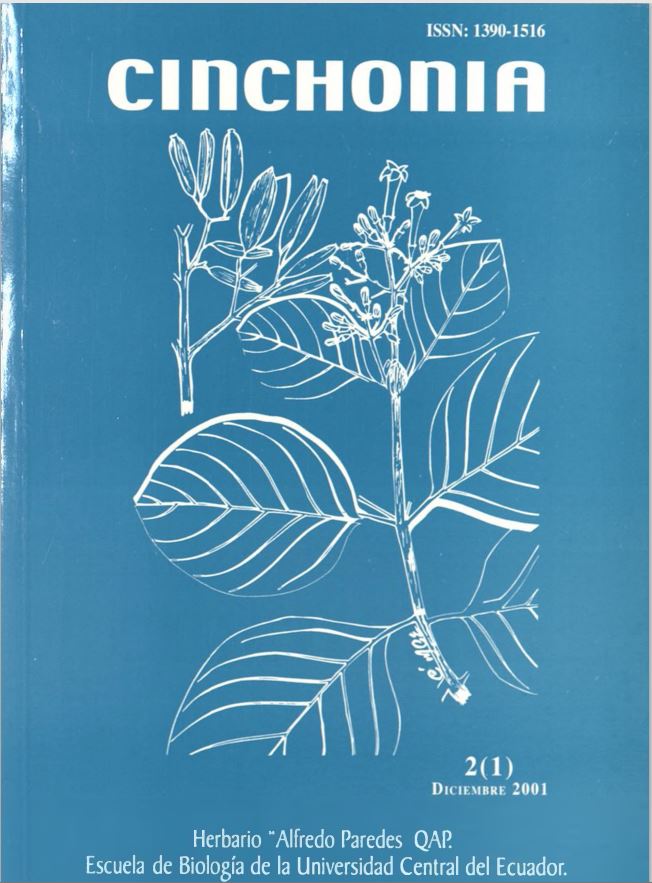DIVERSIDAD Y ESPECIES FRECUENTES EN LOS REMANENTES DE LA PARTE BAJA DE LA CORDILLERA DE TOISAN, IMPLICACIONES PARA SU CONSERVACIÓN Y MANEJO.
Main Article Content
Abstract
The study area is located in the Ecuadorean province of Imbabura, Cantón Cotacachi. Parroquia García Moreno, in the Cooperativa Rumiñahui (78°58’W-00C19’N, 550-950 m), Naranjito (78°57’W-00o17'N, 600-700 m), and Nueva Fé (78°56'W-00°14'N, 650-800 m). The area is covered by Evergreen Foothill Forest and located in the Premontane Wet Forest life zone. 66 Cinchonia Vol. 2. #/. 2001 Reid work was carried out in April, May, and August-September 2000. We sampled vegetation at eight localities (Rummahui 1, 2, 3, Naranjito 4, 5, and Nueva Fe 6, 7, 8) using at each locality five transects measuring 50 x 4 m and arranged radially, for a total sample of 0.1 ha. Within each transect all stems =2.5 cm dbh were recorded, measured for diameter, collected, and identified to species. Voucher specimens have been mounted in the QAP Herbarium under Cerón et al. numbers 40,823-42,488. Indices of diversity and similarity were calculated for all data. The inventories registered 261 species, 27 of them endemics (10.3%). Two hundred and twenty-nine species (87.7%) are new records for the province of Imbabura. The number of species in each 0.1-ha sample varied from 55 to 68 species and the index of diversity varied from 16.28 to 22.9, which we interpret as moderate alpha-diversity. The similarity index fluctuated between 11.4 and 39.2%. Plots were most similar within 100 m of elevation of each other, and most divergent when separated by more than 200 m. The most common species were: in plot 1, Carapa guianensis (Meliaceae) and Iriartea deltoidea (Arecaceae); in plot 2, C. guianensis and Lozanía mutisiana (Icacinaceae); in plot 3, Otoba novogranatensis (Myristicaceae) and Cyathea multiflora (Cyatheaceae); in plot 4, Theobroma gileri (Sterculiaceae) and O. novogranatensis, in plot 5, Wettinia quinaria (Arecaceae) and Faramea fragans (Rubiaceae); in plot 6, Ossaea robusta (Melastomataceae) and O. novogranatensis, in plot 7, Ossaea brenesii (Melastomataceae) and O. novogranatensis. and in plot 8, O. robusta and Grias peruviana (Lecythidaceae).

